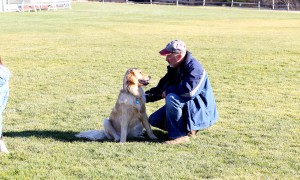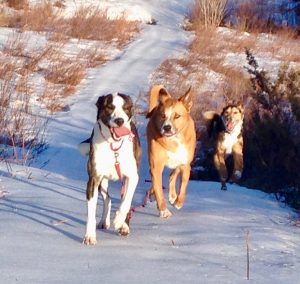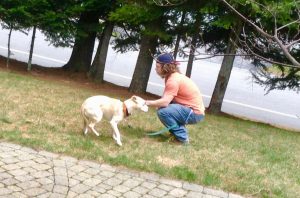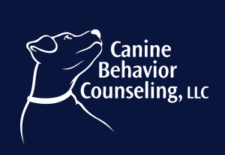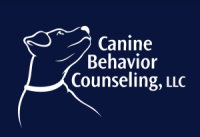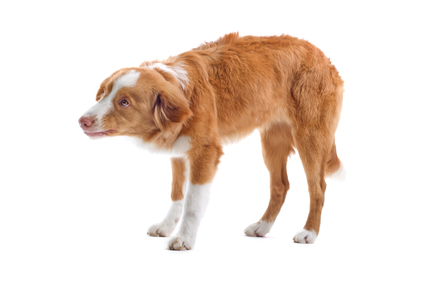As a dog trainer, I often work with dogs who have bitten people, yet I am able to hand feed and often begin body handling them without getting bitten myself. Since dog bite prevention is a critical focus of my reward-based dog training, I will share some simple techniques to reduce your chances of being bit by a dog.
Learn to read dog body language:
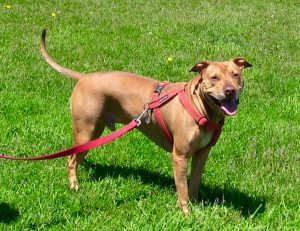
If the dog is facing you, look for signs he is calm and relaxed. These would include a loose body (free of tension), open mouth, relaxed ears, soft blinking eyes, relaxed neutral tail and ears. These are communications signs from the dog that he is feeling okay about you near him. This handsome boy is offering me friendly relaxed body language as he stands at an angle showing he is feeling comfortable about my presence.
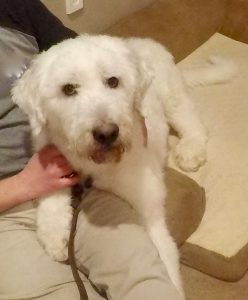
If the dog is facing you with a closed mouth, or a non blinking eye, with body weight forward, or stiff, or eager to get to you in an aroused state. He may be saying stay where you are.
This cute fuzzy face is facing me directly with his head and neck raised up, closed mouth, still body, with round eyes that are not blinking. All signs the dog is unsure, and asking me to stay away.
Consider the history: Dogs who have been physically grabbed, alpha rolled, held down, and dominated are 100% more likely to feel stress when approached by a stranger. These dogs often panic, are unable to think clearly and overreact to a strangers approach by lunging, growling or snapping as their safety is paramount. Dogs who have not experienced positive associations with humans will be less trusting and may take a while to trust. The dog must set the pace in the relationship.
What do I do to avoid being bitten?
- I stop moving, turn my face away, raise my chin up and slowly turn sideways to the dog, relax my joints as I take a deep breadth.
- IMPORTANT! I never reach my hand out (BAD IDEA).
- I Begin by asking the dog to come into my space. If he looks at me then looks away, he is telling me he is worried and I should not approach.
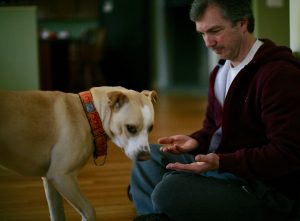
- If the dog is displaying low body compression, curved back, I will often get low and turn slightly away, offer a toy or treat to the dog, if he moves towards me, then I engage by tossing a toy or treat.
- I wait and see if the dog stays in my space or immediately retreats. A dog who immediately moves away or maintains a forward stance is not ready to be petted, this is a low level distance cue and should be respected.
How can you make Friends with a territorial Dog? Treat and Retreat is a progressive training program I use to build a trusting relationship with stressed or conflicted dogs. This is simply a game to reduce the dogs stress as I am in the dogs presence, this is not about petting the dog. Reducing a dogs fear will reduce territorial aggression, leash lunging, air snapping, and biting. Click the link to view a video of me playing Treat and Retreat with a shy dog.
Video: Treat and Retreat with Contact
In Summary:
- A dog who approaches me and leans against me has invited contact. I can slowly pet his back one or two strokes and then stop, to observe the dogs body language and wait for the dog to invite more contact.
- A dog who turns his face away should not be appraoched.
- Learn Dog Body Language:
- A dogs relaxed body language, often offered by a dog at feeding time. Open mouth, soft eyes, relaxed loose jointed body, neutral tail and ears.
- Fearful/stressed body language, often offered at the vets. May include stiff or curved body, slow body movements, tucked tail, looking or turning away, tightly closed mouth, wrinkled brow, refusal to eat treats, lowered head, growling or lip curling, ears pinned to head, paw lifted, whites of eye showing.
- Have a plan when you see the dog. If you do not have treats on you, ignore the dog completely. With high value treats on you, you can begin the Treat and Retreat game.
- The dog always sets the pace, if the dog attempts to look or turn away, just stop and ignore the dog. Give the dog a break, sit down or start farther away from the dog. If the dog begins to bark or lunge at you then slow the progression down as you are just making him more fearful/stressed.
Dogs give plenty of warning before they bite, it is up to you to ignore any dog that is not seeking out your touching. With the above advice you will be able to slowly make friends with fearful/protective dogs without pushing the dog to the point of using his teeth to resolve conflict.
I have added a few photos below for you to practice your observational skills in reading dogs body language.
